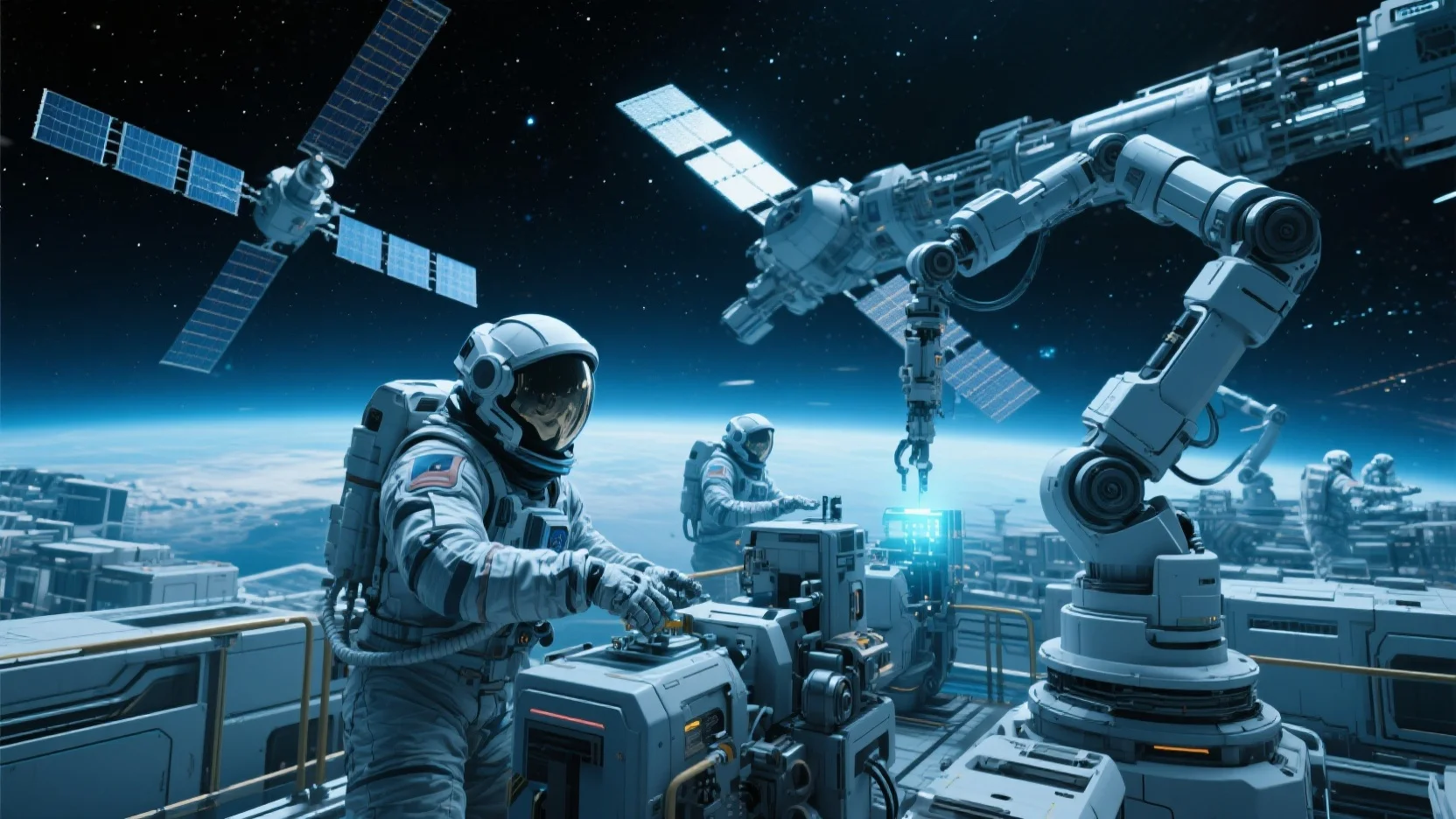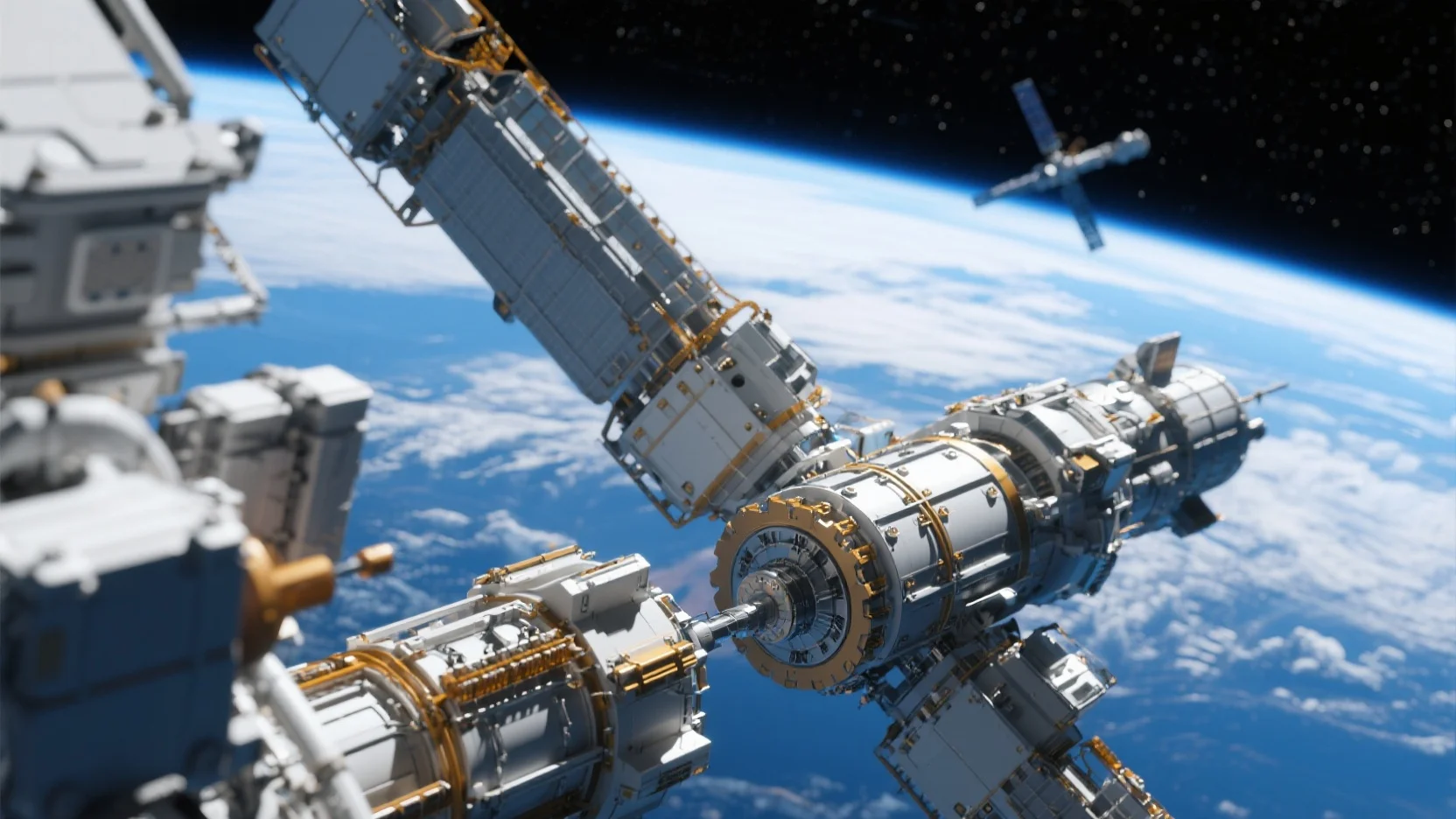Did you know that by 2030, the number of astronauts spending over 6 months in space is projected to increase by 30%? According to McKinsey and NASA, space-based manufacturing offers a world of opportunities, from additive manufacturing to recycling-based processes. Compare premium space manufacturing against counterfeit models on Earth and see the difference! The unique microgravity and vacuum conditions in space result in products with superior properties, like high-quality semiconductors. However, there are risks too, such as microgravity production hazards and orbital research liabilities. Best Price Guarantee and Free Installation Included! Don’t miss out on this buying guide to navigate these complexities.
Space-based manufacturing
According to a McKinsey analysis, microgravity manufacturing offers the potential for companies across multiple sectors to venture into space. Space-based manufacturing and processing lead to groundbreaking advancements in production capabilities.
General manufacturing processes
Additive manufacturing
Additive manufacturing in space holds great promise. In a microgravity environment, the material deposition process can be more precise. For example, 3D printing in space can create complex geometries that are difficult to achieve on Earth. A practical case is the use of additive manufacturing to produce replacement parts for spacecraft during long – term missions. Pro Tip: When planning additive manufacturing in space, consider the unique flow properties of materials in microgravity to ensure high – quality prints. As recommended by industry experts, using materials with well – understood rheological properties can enhance the success rate of additive manufacturing processes.
Recycling-based manufacturing
Recycling – based manufacturing in space is essential for long – term space exploration. With limited resources in space, recycling waste materials into useful products is crucial. For instance, old spacecraft components can be recycled to make new tools. According to some space research studies, recycling can reduce the need to transport large amounts of raw materials from Earth, thus saving costs and resources. Pro Tip: Develop efficient recycling algorithms to ensure maximum material recovery. Top – performing solutions include using advanced sensors to identify and separate different types of materials in the waste stream.
Advanced materials processing
Advanced materials processing in space takes advantage of the unique environment. The vacuum of space facilitates containerless processing, minimizing contamination and enabling the production of larger, higher – performing crystals for semiconductors. A data – backed claim from space research shows that crystals grown in space have fewer defects compared to those grown on Earth. As an example, some semiconductor companies are exploring space – based production to create more efficient microchips. Pro Tip: When conducting advanced materials processing in space, maintain strict environmental controls to avoid any external factors that could affect the quality of the materials.
Main products
The main products of space – based manufacturing include high – quality semiconductors, advanced alloys, and medical products. The unique conditions in space, such as microgravity and vacuum, allow for the production of materials with superior properties. For example, the production of large, defect – free crystals for semiconductors can lead to more powerful and energy – efficient electronic devices.
Design features of manufacturing equipment
The design of manufacturing equipment for space must consider the harsh space environment. Equipment needs to be lightweight, energy – efficient, and able to withstand radiation. For example, using radiation – hardened materials in the construction of equipment can extend its lifespan. Industry benchmarks suggest that space – grade manufacturing equipment should be able to operate for long periods without maintenance. Pro Tip: Incorporate modular design in the manufacturing equipment to allow for easy replacement of parts during space missions.
Advantages of containerless processing
Containerless processing, both on ground and in a microgravity environment, is particularly important for conducting benchmark experiments to support solidification physics research topics. In addition to the reduced contamination, containerless processing in space can also lead to new discoveries in materials science. For instance, it can help researchers understand the fundamental processes of material solidification. A data – backed claim from space material studies shows that containerless processing can lead to the formation of unique material structures. Pro Tip: Leverage containerless processing techniques to study materials that are difficult to handle on Earth due to their reactivity with containers. Try our online material simulation tool to predict the behavior of materials during containerless processing.
Key Takeaways:
- Space – based manufacturing offers unique opportunities in additive, recycling – based, and advanced materials processing.
- The main products of space – based manufacturing have superior properties due to the space environment.
- Containerless processing in space has significant advantages for materials research and production.
Microgravity production risks
It’s a well – known fact that long – term space missions are on the rise. According to a SEMrush 2023 Study, by 2030, the number of astronauts spending over 6 months in space is projected to increase by 30%. This growing trend highlights the significance of understanding the microgravity production risks associated with such extended space stays.
Biological and mechanical mechanisms
The biological and mechanical mechanisms behind these risks are complex. Microgravity affects the body at a cellular level. For instance, studies on endothelial cells have shown that simulated microgravity can lead to changes in cell growth, cytoskeletal organization, and apoptosis. These changes can have far – reaching effects on various physiological functions in the body. A technical checklist for researchers could include monitoring cell markers, gene expression, and protein synthesis in relevant cell types to better understand these mechanisms.
Effectiveness of countermeasures
Many countermeasures have been proposed to mitigate these risks, such as nutritional interventions, exercise programs, and medications. However, a systematic review by Sandal, P. H. et al. found that standalone nutritional countermeasure interventions have an absence of meaningful effects on musculoskeletal and cardiovascular outcomes, with a tendency towards detrimental effects. An ROI calculation example could be used here. Let’s assume that a particular nutritional intervention costs $100,000 per mission. If it doesn’t improve the musculoskeletal or cardiovascular conditions of astronauts, then the return on investment is zero. Pro Tip: Instead of relying on standalone countermeasures, a combination of exercise, nutrition, and medical monitoring should be used.
Try our risk assessment calculator to evaluate the potential microgravity production risks for a specific space mission. Top – performing solutions include using advanced simulation technologies to predict the effects of microgravity on the human body before a mission.
Well – known risks
Musculoskeletal issues
Musculoskeletal problems are among the most prominent risks astronauts face. In microgravity, the inactivity and reduced mechanical stress on muscles contribute to spaceflight – induced muscle atrophy. A practical example is the case of some astronauts who, after a long – duration space mission, have experienced significant loss of muscle mass. Pro Tip: To counter this, astronauts can follow a well – structured resistance exercise program during their space mission. Regularly performing squats, deadlifts, and other weight – bearing exercises can help maintain muscle strength.
Cardiovascular problems
The cardiovascular system also undergoes significant changes in space. The heart doesn’t have to work as hard to pump blood against gravity, which can lead to a decrease in heart muscle mass over time. Studies have shown that astronauts may experience changes in their blood pressure profiles during and after a spaceflight. As recommended by NASA’s medical guidelines, maintaining proper hydration and a balanced diet is crucial for cardiovascular health in space.
Fluid shifts and vision risks
Fluid shifts are another concern. In microgravity, fluids in the body tend to move towards the head, which can cause increased pressure in the eyes and potentially lead to vision problems. Some astronauts have reported changes in their vision after extended space missions. Key Takeaways: Astronauts should be regularly monitored for fluid shifts and vision changes. Using specialized equipment to measure intracranial pressure can help in early detection.
Orbital research liability
Associated risks
Limited understanding of space radiation
Despite significant efforts in research, our comprehension of the space radiation environment and the risks it poses to long – duration astronauts remains shockingly limited. Space radiation is a principal environmental factor that restricts human tolerance for space travel. According to multiple NASA studies, it is a primary risk that needs urgent mitigation strategies to enable crewed exploration of the solar system (NASA, various research reports).
A practical example of this limited understanding in action is that even after years of sending astronauts to space, scientists still can’t precisely predict the long – term health impacts of space radiation on crew members. Pro Tip: Research institutions should collaborate more closely with space agencies to pool resources and data for more comprehensive studies on space radiation.
As recommended by industry experts, more in – depth research is needed to map out the complex nature of space radiation. This will help in developing better shielding technologies to protect astronauts during long – duration missions.
Health risks during research

During orbital research, astronauts face a multitude of health risks. For instance, bone loss is one of the pronounced problems astronauts encounter due to an extended stay in space. The inactivity and reduced mechanical stress on muscles in microgravity also contribute to spaceflight – induced muscle atrophy, as researchers have extensively examined (multiple peer – reviewed studies in space medicine).
Let’s take a case study of a long – duration space mission. Astronauts on the International Space Station often experience significant bone density loss, which can lead to a higher risk of fractures once they return to Earth. To combat this, they perform resistance exercises, but these might not be fully effective.
Pro Tip: Scientists should focus on further dissecting the exact mechanisms of microgravity – induced bone loss. This will enable the development of more effective preventative and therapeutic measures to protect against bone loss.
Top – performing solutions in this area could include the development of new drugs that target the underlying biological processes of bone and muscle loss in microgravity. Additionally, there is a need to study the effects of microgravity on mitochondrial stress – related diseases for the development of new therapeutic drugs.
Key Takeaways:
- Understanding of space radiation is still limited, which is a major obstacle for long – duration space travel.
- Astronauts face multiple health risks during orbital research, such as bone loss and muscle atrophy.
- More research is needed to develop better mitigation strategies for these risks, including new shielding technologies and drugs.
Try our interactive simulation to understand the impact of microgravity on human health during space missions.
FAQ
What is space-based manufacturing?
Space-based manufacturing refers to the production processes carried out in the space environment. According to a McKinsey analysis, it offers unique opportunities in additive, recycling – based, and advanced materials processing. The main products, like high – quality semiconductors and advanced alloys, have superior properties. Detailed in our [General manufacturing processes] analysis, it can lead to groundbreaking advancements.
How to mitigate microgravity production risks?
To mitigate microgravity production risks, a combination approach is recommended. As Sandal, P. H. et al. found, standalone nutritional countermeasures may not be effective. Instead, use a mix of exercise, nutrition, and medical monitoring. Steps include following a resistance exercise program, maintaining proper hydration, and regular medical check – ups.
Space-based manufacturing vs Earth-based manufacturing: What are the differences?
Unlike Earth – based manufacturing, space – based manufacturing benefits from microgravity and vacuum. This allows for more precise additive manufacturing, containerless processing with less contamination, and production of materials with fewer defects. For instance, crystals for semiconductors grown in space have superior quality. Detailed in our [Advantages of containerless processing] analysis.
Steps for conducting orbital research safely?
Conducting orbital research safely involves multiple steps. First, collaborate to improve understanding of space radiation, as recommended by industry experts. Second, focus on developing mitigation strategies for health risks like bone loss. Third, use advanced simulation technologies to predict the effects of microgravity. This approach helps ensure the safety of astronauts during research.






